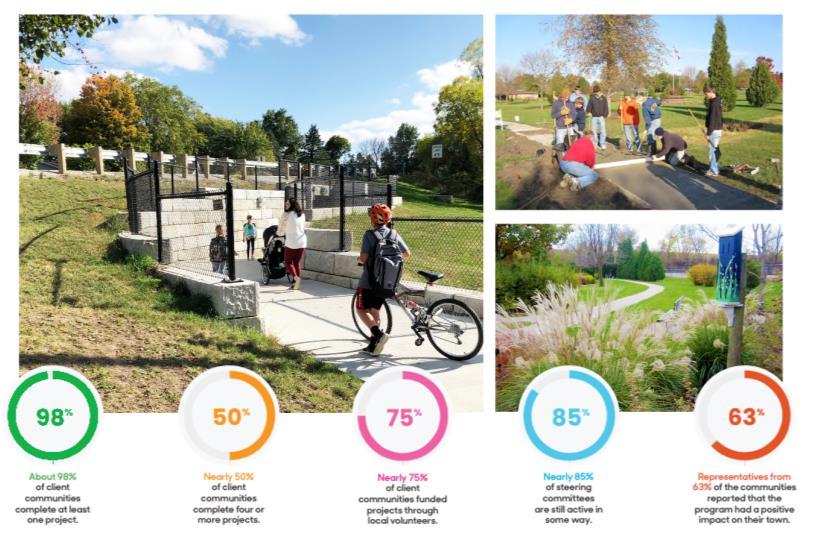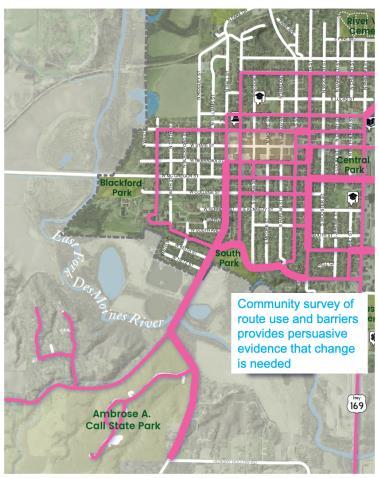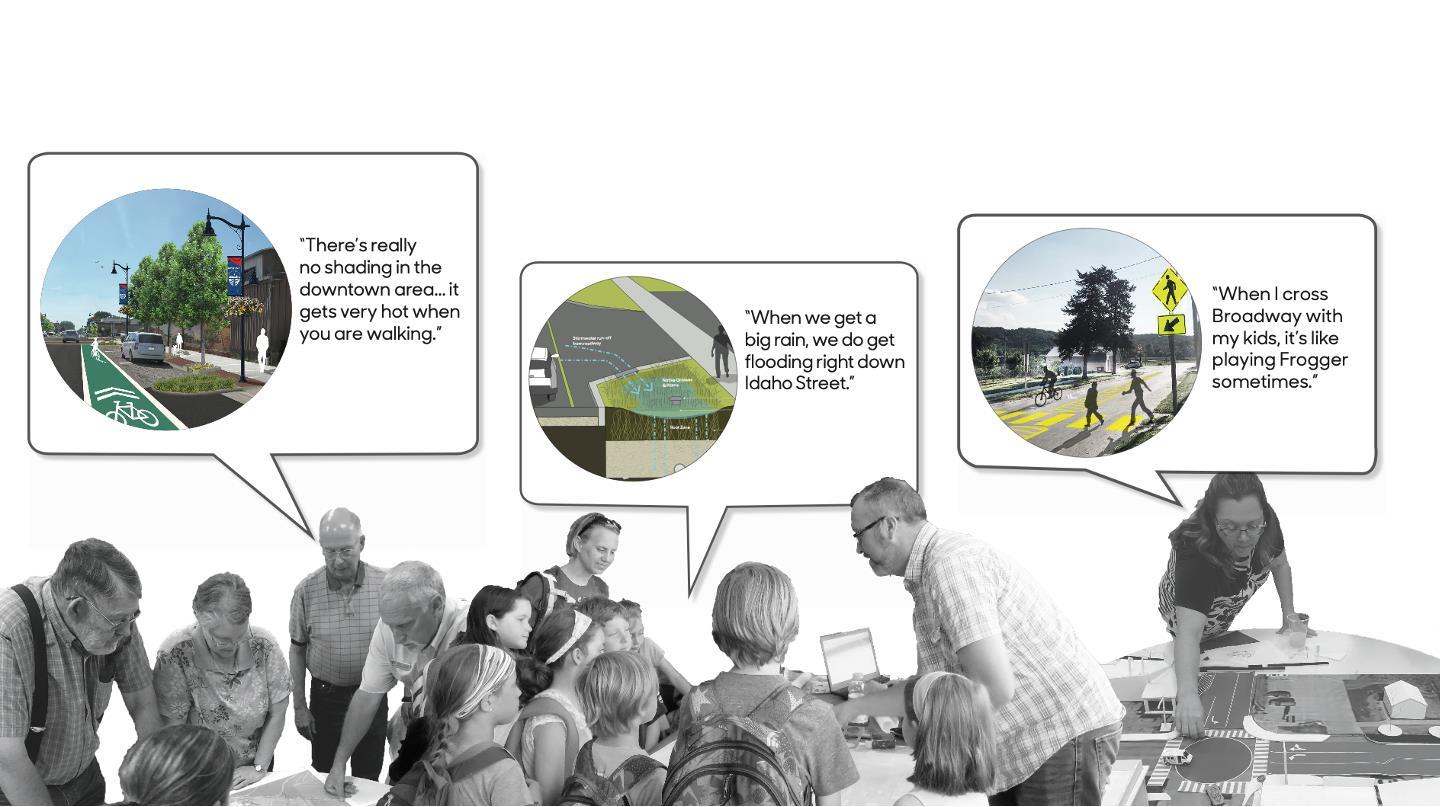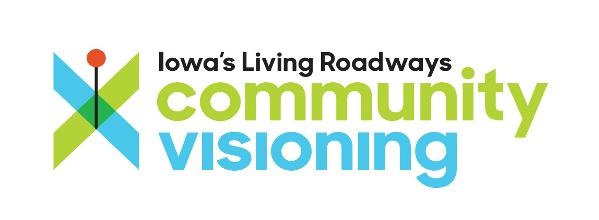
3 minute read
IowaStateUniversity,TreesForever& IowaDepartmentofTransportation
The purpose of this statewide planning program is to help rural communities in Iowa create plans to improve walkability, cycling, access for all people, stormwater functions, and ecosystem performance as it relates to transportation infrastructure. Sponsored by the Iowa Department of Transportation, the program integrates skills and knowledge from landscape architects in public and private practice with support from private nonprofit partners. This team project is led by a public-sector landscape planning office, in cooperation with landscape architects and transportation planners from the public and private sectors. The planning process is structured to lead communities through a decision-making process about transportation system improvements using evidence-based design, public engagement, and facilitated implementation planning. We work with 10 communities a year and have assisted more than 250 communities to date.
Serving communities with populations under 10,000, this transportation planning program provides planning to address critical deficiencies rural transportation system design and construction. Issues facing Iowa’s 850+ rural communities include an aging population, poor infrastructure quality, loss of urban tree canopy, exurban development of schools and other institutions, limited funding from local taxes, and increased impacts of climate change. Because few communities have planning staff, our team provides decision-making support to help towns envision projects. Implementation relies on the coordinated effort of knowledgeable elected leaders and community volunteers, as well as effective communication and partnerships to secure additional design services and pursue construction activities. In our program, residents are guided through an investigation of landscape patterns and historical development of the town and infrastructure using a story map; a study of user needs using focus groups of varied user types as well as a community survey; an inventory of existing system conditions and future plans; community transportation goal setting; and a design workshop and follow-up dialogues to develop concept plans. We also provide guidance for effective project implementation. Each fall, an annual conference welcomes 10 newly selected communities into the planning process, while communities completing the program present their plans, providing opportunities for peer learning and mentoring.
Advertisement
The program has been substantially revised since 2008 to introduce evidence-based assessments and take advantage of online platforms such as story maps. We found through interviews with participants that the focus groups and surveys help to enlighten people about the breadth of user needs and the level of community support for transportation system upgrades and enhancements to improve environmental quality. Local officials have been more willing to invest in projects to enhance access and meet health needs. Because community sentiment tends to be very strong in rural Iowa, understanding these needs and desires has a huge impact on the will to pursue connectivity and access projects. In addition, in post-disaster communities our planning process facilitates communicative decisionmaking about resilience. Our ability to visualize and communicate about how infrastructure, water, and vegetation provide alternatives to traditional, expensive engineering solutions. Our clients have successfully pursued projects such as infiltration trenches, urban reforestation, rain gardens, and roadside conservation to mitigate increased runoff from intense storms.
We also have created a community of rural practitioners over time, as we engage with 3–5 firms per year with each employing 1–3 interns with program funds. Our central planning team employs 7–10 interns every year to develop story maps and conduct focus-group and survey research in client communities. Having the experience and connection to be comfortable in this practice niche has made rural design more accessible to both design firms (connections) and for rural communities who in the absence of the program might otherwise never have a chance to work with landscape architects.
We evaluate whether projects are built after planning by monitoring the media, following up with steering committees, and tracking grant awards to client communities. We have found that more than 98% of communities complete at least one project and more than 50% complete four or more projects. From 1998 to 2021, 31.6% of Parks and Open Space grants from Iowa DNR-Reap funds small-community section went to our projects for a total of $4,864,174. A total of 55.2% of funds awarded by the Iowa Economic Development Authority to towns with under 10,000 people went to our clients from 2001–2021, for a total of $16,149,493. Since 2015, Wellmark Foundation has awarded $2,094,434. In short, our collective effort has empowered communities to make infrastructure and open space improvements, fueled by great evidence, facilitation, and fitting plans.













